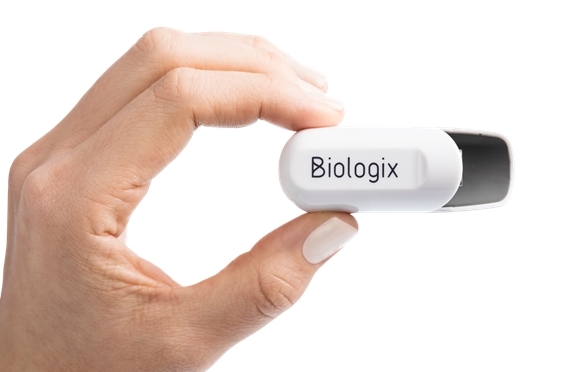

Based on the Internet of Things, the system was developed in a project supported by FAPESP. Patients can be advised to seek hospital care if they detect a deterioration in clinical signs (image: Biologix)
Based on the Internet of Things, the system was developed in a project supported by FAPESP. Patients can be advised to seek hospital care if they detect a deterioration in clinical signs.
Based on the Internet of Things, the system was developed in a project supported by FAPESP. Patients can be advised to seek hospital care if they detect a deterioration in clinical signs.

Based on the Internet of Things, the system was developed in a project supported by FAPESP. Patients can be advised to seek hospital care if they detect a deterioration in clinical signs (image: Biologix)
By Elton Alisson | Agência FAPESP – Developed by Biologix, a startup headquartered in São Paulo, Brazil, a sleep apnea home diagnostic and monitoring system based on the Internet of Things can be used for the remote monitoring of individuals with suspected COVID-19 or mild symptoms of the disease. The system can also be used to recommend transfer to a hospital if the patient’s clinical signs worsen.
Two private hospitals in São Paulo, the epicenter of the pandemic in Brazil, will test the technology. The development of the innovation was supported by FAPESP via a project funded under the PIPE/PAPPE Grant program, a partnership between FINEP, the Brazilian government’s innovation agency, and FAPESP via its Innovative Research in Small Business (PIPE) program.
“Several devices are already available to monitor patients with suspected COVID-19 or mild symptoms, but they’re based on the patient’s subjective responses. They don’t monitor clinical signs as our system does,” Tácito Mistrorigo de Almeida, CEO of Biologix, told Agência FAPESP.
The physical part of the system is a cordless portable sensor, which, when placed on the patient’s index finger, captures oxygen saturation and heart rate data.
The data are collected in real time by a free smartphone app available for the Android and iOS platforms. The program automatically sends the data to the cloud and to a control panel operated by the medical team responsible for monitoring each patient.
If the system shows a drop in oxygen saturation, the medical team contacts the patient or on-site carer. Low oxygen saturation is one of the main warning signs of a deteriorating condition in the case of both COVID-19 and sleep apnea, in which breathing repeatedly stops and starts.
The team advises immediate hospitalization if, in addition to the data showing a fall in oxygen saturation and heart rate, the patient or carer reports fever, a cough, fatigue and difficulty breathing, which are typical symptoms of infection by SARS-CoV-2.
“The system enables the monitoring staff to refer patients to a hospital at the right time, lowering the risk of contagion by interaction with others and, above all, protecting healthcare workers,” Almeida said.
The technology can also be used by hospitals, health management organizations and insurers to monitor not only patients with suspected COVID-19 or mild symptoms of the disease but also older people and other members of the groups most at risk of developing a severe form of the disease.
“In hospitals, the system can be used to monitor noncritical COVID-19 patients and leave intensive care unit beds free for critical patients,” Almeida said.
Adaptability
Biologix is supported by Eretz.bio, a healthtech startup incubator operated by the Albert Einstein Jewish-Brazilian Charitable Society (SBIBAE) that also assists several firms with initiatives funded by PIPE-FAPESP to develop technologies for COVID-19 diagnosis, monitoring and treatment.
Among these are Magnamed, which will supply 6,500 mechanical ventilators to the Ministry of Health of Brazil, and Hoobox, which, in partnership with Radsquare, has developed a system that detects fever remotely.
“This ecosystem of healthtech startups has been agile, evidencing a capacity to reconfigure rapidly in order to create solutions for the fight against COVID-19, including technologies that can be used in triage to identify patients who require more urgent treatment,” said José Cláudio Cyrineu Terra, head of innovation at SBIBAE.
Republish
The Agency FAPESP licenses news via Creative Commons (CC-BY-NC-ND) so that they can be republished free of charge and in a simple way by other digital or printed vehicles. Agência FAPESP must be credited as the source of the content being republished and the name of the reporter (if any) must be attributed. Using the HMTL button below allows compliance with these rules, detailed in Digital Republishing Policy FAPESP.





